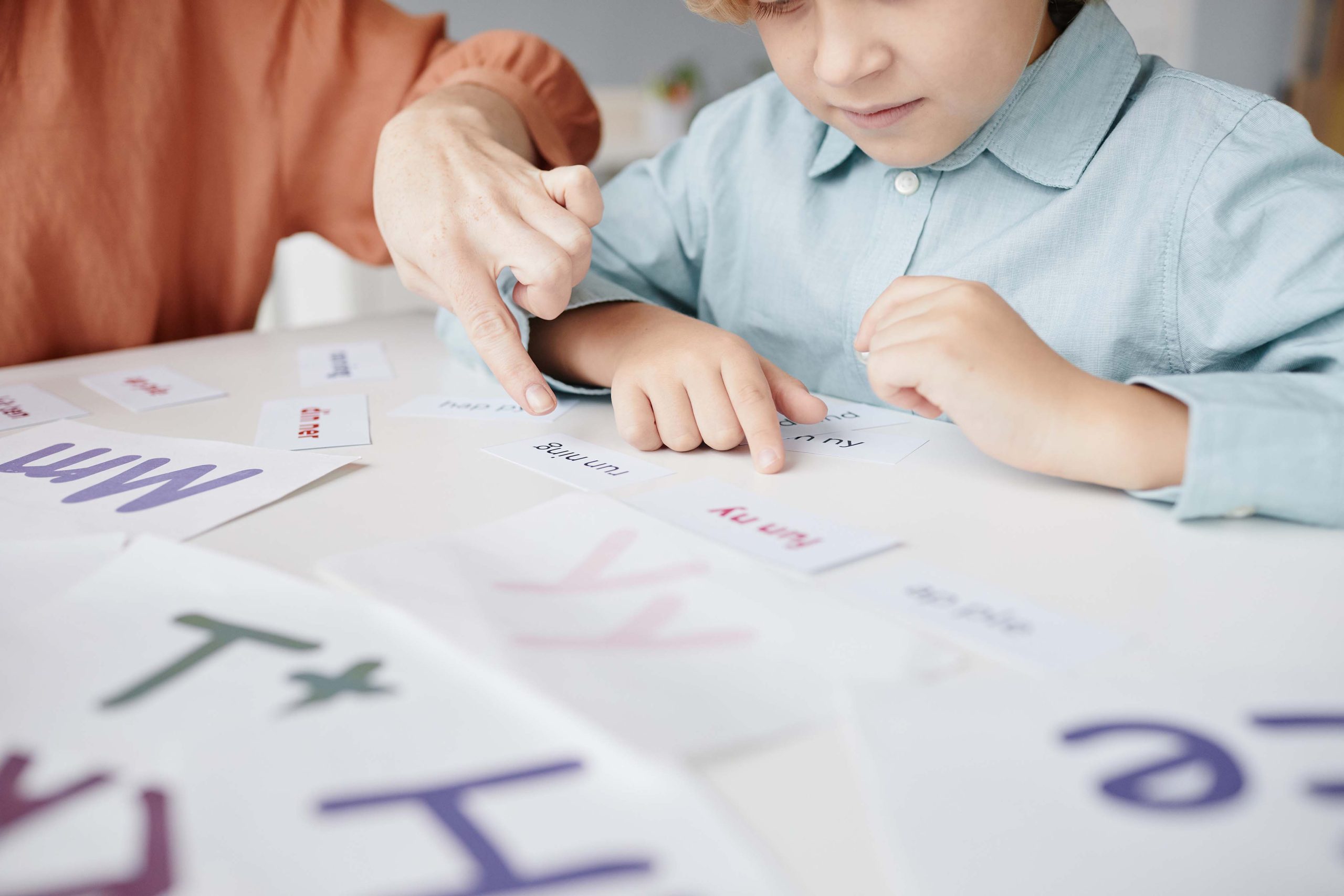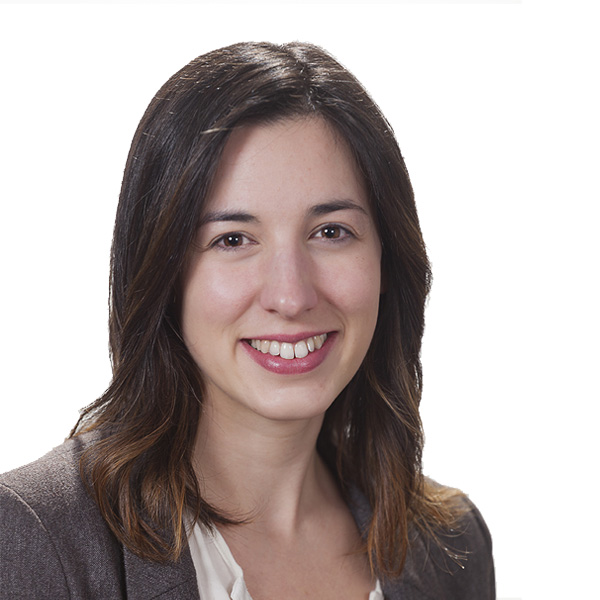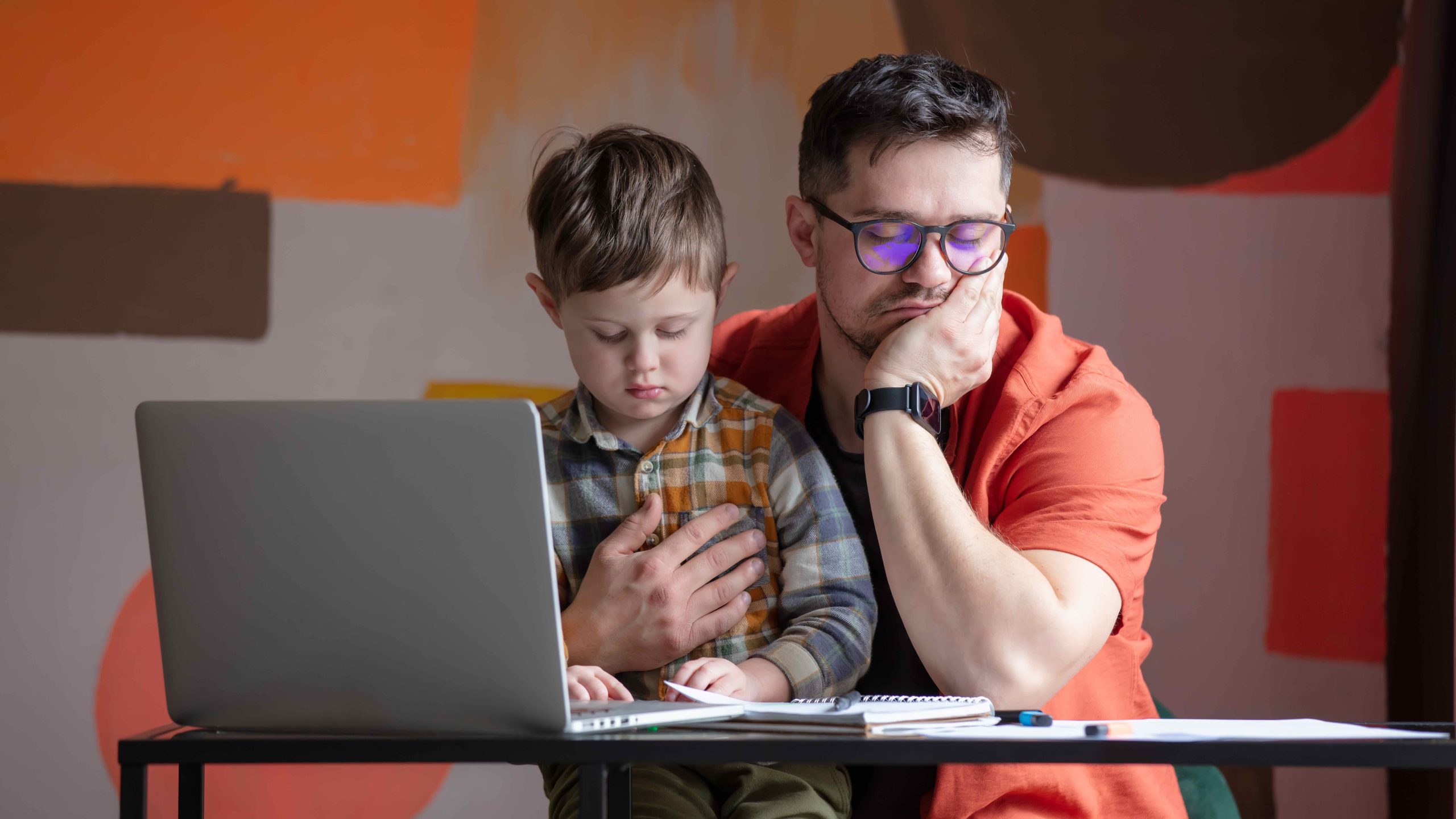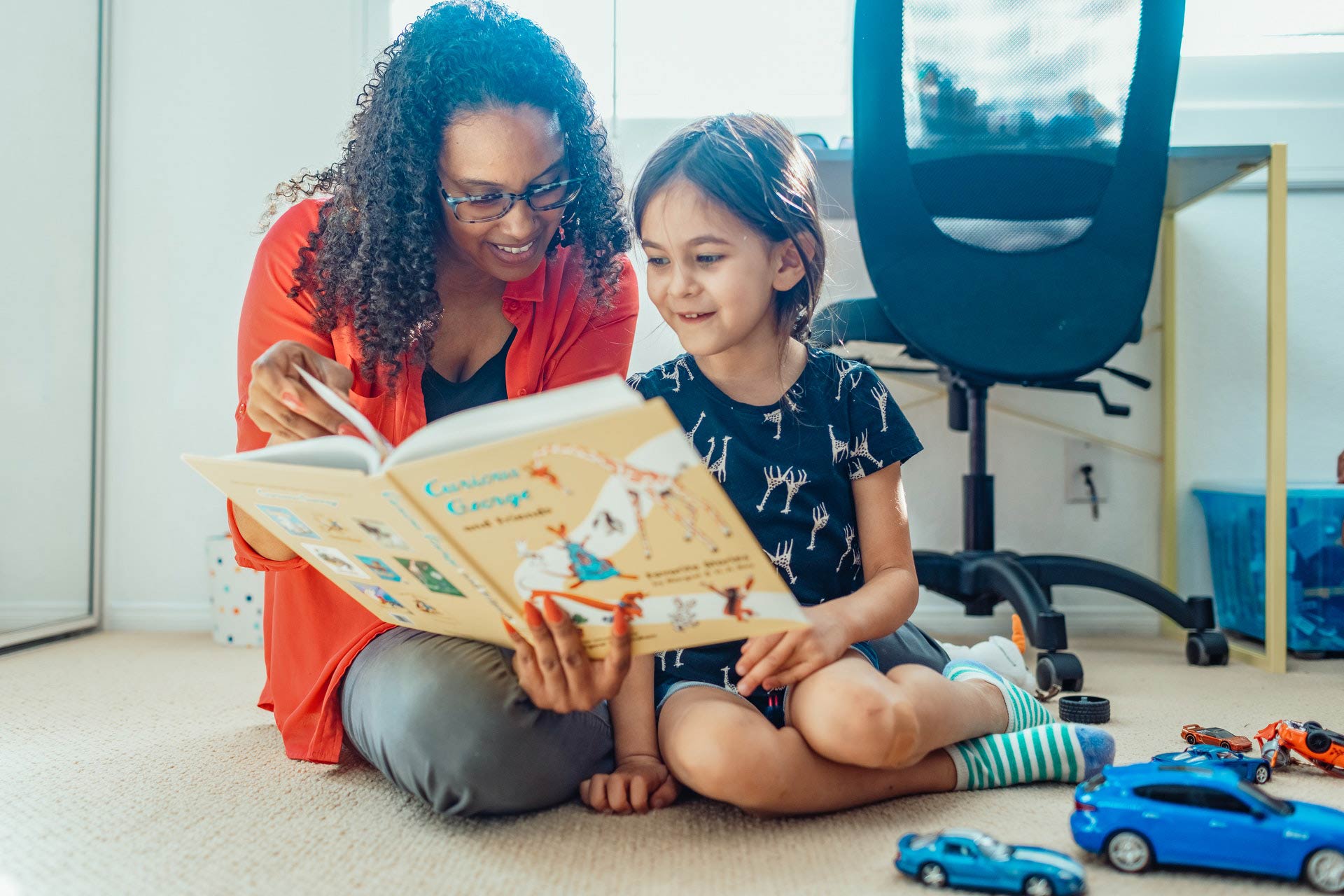Speech Therapy: It's not just for children
Communication is a fundamental aspect of human interactions, and is essential in many aspects of our lives, from personal relationships to professional development. Still, for some adults, communication can be a challenge if they suffer from language, speech or voice difficulties. This is where adult speech therapy comes in, providing valuable intervention to help people improve their communication skills and gain confidence in their abilities. In this article, we will explore the importance of adult speech therapy and the positive impact it can have on people’s lives.
Understanding language, speech and voice disorders in adults
Communication difficulties in adults can be secondary to a number of different causes. On the one hand, they may be caused by acquired brain damage, such as stroke or head injury; by neurodegenerative diseases, such as Parkinson’s; or they may be the result of a developmental disorder, psychological factors, or organic causes, such as cancer. These disorders can appear in different ways, affecting language, speech and/or voice.
What language disorders can adults suffer from?
Language is the ability of human beings to express thoughts and feelings through words. If an adult suffers a stroke or head injury, his or her language ability may be impaired, making it difficult not only to express thoughts but also to understand what is being said. There are several neurological language disorders, although the best known is aphasia.

How can we develop a good sleep hygiene?
Aphasia occurs when there is damage in the areas of the brain responsible for language processing. This condition can be temporary or prolonged, depending on the cause and other factors. Speech therapy helps to improve the language skills of sufferers.
The most common types of aphasia are:
- Broca's aphasia: People with Broca's aphasia generally understand what is being said, although they may have difficulty understanding long or complex sentences. On the other hand, they have greater difficulty expressing what they mean.
- Wernicke's aphasia: This type of aphasia is characterized by difficulty in understanding sentences, and by expression with words and phrases with little meaning, or out of context.
Can an adult have other communication difficulties?
In speech therapy terms, when we talk about language, we refer to the content of what we are communicating, i.e. the words, the syntactic rules that make up sentences, and the coherence between what we are saying and the context of the conversation. Other areas of oral communication that may be affected are speech and voice.
Speech refers to the coordination of face and mouth muscles that we use to articulate words properly and fluently. If a person has not learned to articulate certain sounds during language acquisition, but has the potential to learn them, this would be a phonological disorder, or dyslalia. It usually occurs with sounds such as /s/ or /r/, if they have not learned them as children and as adults continue to present this difficulty.

On the other hand, if the articulatory difficulties have been acquired due to brain damage, it would be dysarthria. When an adult suffers from dysarthria, there may be multiple sounds that he/she has «forgotten» how to articulate, thus affecting oral expression.
If the adult is able to articulate all sounds adequately, but his or her speech fluency is interrupted by frequent repetitions of sounds, syllables and/or words, as well as unwarranted pauses, this would be dysphemia: a speech fluency disorder, also called stuttering.
On other occasions, the difficulty in adult communication may be centered on the voice. Dysphonia occurs when there are problems with a raspy, hoarse or blown out voice on a continuous basis, which prevents the individual from performing his or her job or communicating in social interactions. They can be caused by organic reasons, such as nodules; neurological causes, such as vocal cord paralysis; or psychological causes, such as psychogenic dysphonia. It is recommended to consult a professional, Otolaryngologist or Speech Therapist, if the dysphonia lasts more than two weeks, to assess surgical intervention, and to start with a speech therapy intervention, in which exercises would be performed to improve voice production and healthy vocal habits would be learned.
Other disorders in which speech-language pathologists intervene
Related to communication, but in this case, written, speech therapists also work with adults who have difficulties in reading or written expression. When these difficulties have not been present since childhood and appear in adulthood, they occur secondary to brain damage. When the difficulty is primarily in reading, it is called alexia; and when it is in writing, it is agraphia.

Finally, speech therapists also specialize in working with people who have swallowing difficulties. The difficulty in getting liquids or food down the esophagus is called dysphagia. The food bolus may go down the airway instead of the digestive tract, causing coughing, gagging or choking. It may be caused by a narrowing in the back of the throat, or by weakness in muscles or nerves responsible for swallowing, secondary, for example, to a neurological disorder. When the difficulty is in the placement of the tongue or lips when swallowing, it may be an atypical swallowing. This can lead to malocclusion, and speech therapy may be required when an adult with a poorly positioned tongue when swallowing, and who pushes the teeth forward, wants to use orthodontics.
What is the role of the speech therapist in these disorders?
The speech therapist is the professional in charge of the evaluation, diagnosis and intervention of communication and swallowing disorders. However, when the cause is neurological and organic, the physician will be in charge of the diagnosis, and the speech therapist will be in charge of assessing the severity of the pathology at that moment and of elaborating and carrying out an intervention plan. Therefore, sometimes, speech therapy will be part of an intervention plan together with other professionals.

The intervention plan usually involves one or more weekly therapy sessions, and the practice of what has been learned at home, so, if necessary, the family members of the affected person can be part of the treatment and help with the practice of the learned exercises.
What results can I expect from speech therapy?
The results of intervention can be variable. When the cause of the disorder is neurodegenerative, speech therapy intervention may reduce the rate at which the difficulty is appearing and minimize its effects, but the difficulty may not disappear completely. In the rest of the cases, with intervention the disorder may disappear, and in others, it may reduce its severity, making daily life easier.
Self-esteem and communication
Living with a communication disorder can have a significant impact on an individual’s self-esteem and self-confidence. Adult speech therapy not only focuses on disorder-specific intervention, but also provides emotional support and encourages adults to incorporate what they have learned into their daily lives and social interactions, to pursue personal and professional goals, and to gain new confidence in the skills they have learned.

The importance of speech therapy
Speech therapy for adults is a vital resource that can transform the lives of people suffering from communication or swallowing disorders. Through specialized treatment, with an individual intervention plan by speech therapists, people can improve their language skills, being able to understand what is being said to them and find the words they want to use to express themselves; they can improve their articulation and speech fluency skills; they can optimize the use of their voice for social and work activities; they can read or write independently; and they can return to drinking and eating safely.
Communication is the tool we use to relate to each other, to get what we need or want, and to express who we are. Speech therapy is the discipline in charge of providing this tool to people who need it, giving them the opportunity to alleviate such a basic need as it is to relate and create links with other people.
Division of Speech Therapy
Speech Therapist
Children, adolescents and adults
Languages: English and Spanish
Does my child have a specific learning disorder?
Alba Sanchez Blake has a diploma in Speech Therapy since 2009. She is currently working in a British school as a speech and language therapist, with children with speech and language difficultie;, and collaborating with teachers in the detection of learning and language difficulties and their necessary school accommodations. She combines school with clinical work at Sinews, where she carries out speech and language assessments and therapy with children and adults.
Martina’s parents came to my office with a big question: does my daughter have dyslexia? Martina is a fast and intelligent child, she has an extensive vocabulary and is very skilled when drawing detailed pictures. Yet, since she started elementary school, she has had great difficulty with reading and writing acquisition and does not seem to be keeping up with her peers.
Dylan is an avid reader. Whenever he can, he dives into his books, and he can later describe in great detail what he has read each day. However, when it comes to understanding math problems and performing calculations, he shows disinterest. He never finishes to learn his time tables, and often gets “distracted” and writes numbers in the wrong order. Dylan’s mother has never been good with numbers, and chose an academic path away from mathematics as soon as she could. Could it be that Dylan suffers from dyscalculia?
What is Specific Learning Disorder?
A Specific Learning Disorder (SpLD) is a disability that results in difficulties in learning and using academic skills involving reading, writing and/or mathematics. These disorders are a permanent condition of neurological origin, unrelated to a lack of intellectual ability. Its severity can vary from person to person, or even within the same person over time.

SpLD affects approximately 10% of the population (according to the European Dyslexia Association), so there may be two to three students with SpLD in a class of 25 students. Apart from academic barriers, individuals with SpLD may also experience barriers in time management, organizational skills, and social perception or interaction. The most common SpLD are dyslexia, which affects reading and writing; dysgraphia, which affects the mechanical part of writing; and dyscalculia, which affects number processing and mathematics.
These disorders can occur independently or combined, i.e., the same individual may have one or more of the disorders. Early diagnosis and intervention will help to alleviate the difficulties of people with SpLD, providing them with a better prognosis at the academic level, greater possibilities at a professional level, and, therefore, a better chance of personal fulfillment, with greater overall well-being. These disorders can be assessed from the first cycle of primary school to the university stage.
What is NOT an SpLD?
According to the DSM-5, learning disabilities are not best explained by:
- Intellectual disabilities.
- Uncorrected visual or hearing disorders.
- Other mental or neurological disorders.
- Psychosocial adversity.
- Lack of proficiency in the language of academic instruction.
- Inadequate educational guidelines
Most common types of SpLD, traits and red flags
Dyslexia
Dyslexia is the most common SpLD, affecting approximately 80% of people with a specific learning disorder. It is characterized by difficulties in reading, writing, spelling or reading comprehension.

Some red flags that can alert us to the existence of dyslexia are:
- Difficulty learning the alphabet, and remembering which sound is represented by each letter.
- Difficulty memorizing rhymes or songs.
- Reduced vocabulary or late speech onset.
- When they have already begun to read: skipping short words, substituting words for similar ones, poor reading comprehension.
- Reading or writing mirror letters, and confusion between letters p, q, b and d.
- Hereditary factor: one or more family members have already been diagnosed with dyslexia.
Dysgraphia
Dysgraphia is associated with difficulties in written tasks. It can affect a variety of skills, from not knowing how to hold a pencil properly to having difficulty drawing pictures, writing or copying letters and numbers.

It is often difficult to decode and read what a student with dysgraphia has written. Some features they present in their writing are:
- Not remembering or not knowing how to represent the shape of letters.
- Not controlling the size of what they are writing.
- Having many spelling mistakes.
- Lack of punctuation.
- Forgetting the proper use of upper and lower case letters.
Dyscalculia
People with dyscalculia present barriers to understanding quantity, numbers and mathematical concepts. Approximately 3% of the population has dyscalculia. For individuals with dyscalculia, it can be difficult to follow and repeat sequences, and to identify the key facts in a math problem needed to solve it.

How to obtain a diagnosis?
For the diagnosis of a specific learning disorder, the collaboration of the teacher will be important, both to report and confirm red flags observed inside and outside the classroom. According to the DSM-5, difficulties in literacy or mathematics should persist for a period of 6 months, despite interventions aimed at these difficulties. It is also important to note that hearing and optometry tests should be kept up to date to rule out difficulties in these areas.
Once these difficulties have been identified, the next step is to receive professional guidance. First, an interview is conducted, in which medical data and the child’s family history are collected. This is followed by an evaluation by a psychologist and a speech therapist, choosing the tests according to the data obtained in the interview.
- The psychologist will be in charge of evaluating the child's executive functions (such as fluid reasoning, processing speed, working memory, verbal and visuospatial ability), thus obtaining her ability in these areas and her Intellectual Quotient (IQ). If deemed necessary, the psychologist will also evaluate the emotional, social and attention areas.
- The speech therapist will perform a battery of academic performance, evaluating oral language (comprehension and expression), reading, writing and mathematics.

Finally, the results obtained by both professionals will be compared and combined to obtain a diagnosis. All the information gathered during the interview, the evaluation and the diagnosis will be given to the parents in a report. The professionals involved in the evaluation should let the parents know the most appropriate intervention for their child (speech therapy sessions, a study-coach or psychotherapy), and the school accommodations corresponding to their needs.
I should not confuse a SpLD with:
- Attention Deficit Disorder (ADD or ADHD). Attention Deficit Disorder, with or without hyperactivity, causes academic difficulties, but these do not necessarily have to be linked to reading, writing and math skills, but to the student's attention capacity and span.
- Specific Language Disorder (SLD). Be careful not to confuse the acronyms! A SLD affects language comprehension and expression. Therefore, the capacity for comprehension and written expression will also be affected in individuals with this condition, as well as mathematical word problem solving. Even so, when it comes to decoding letters for reading, the mechanical part of writing or the area of mathematical calculation, these areas should not be affected.
- Autism (ASD): People with Autism Spectrum Disorder show difficulties in communication and social interaction, and restrictive or repetitive interests. These difficulties may have an impact on academics, but do not necessarily lead to ASDp.
- Difficulties secondary to bilingualism. Bilingualism alone does not cause difficulties at the academic level. Bilingual students, like monolingual students, may have learning disabilities.
Specific Learning Disorders are discovered by poor academic performance caused by difficulties in the acquisition and development of reading, writing and math skills. These difficulties can be alleviated, and it is possible to achieve an adequate academic performance if a personalized diagnosis and intervention are made, directed to the difficulties of each individual in particular.
Division of Speech Therapy
Speech Therapist
Children, adolescents and adults
Languages: English and Spanish
Does Dyslexia Come & Go? Tips for College Students with Literacy Difficulties
Question
I have an 18-year-old daughter who started college this year. She called me a few days ago worried because she mixing up letters and writing words incorrectly, asking if she should go to a specialist; since when she learned to read she often confused the «d» and the «b» when reading or writing.
My question is, can dyslexia appear and disappear in evolutionary periods?
Could we have missed a Dyslexia diagnose?
How will it affect her learning?
Answer
Dyslexia is not related to a lack of intellectual capacity and is not a barrier to success, so many people are able to prepare and study for the profession they want, and develope in life like anyone else. For this reason, there are times when a diagnosis could go unnoticed, if these difficulties do not affect, above all, at the academic level.
Some ways dyslexia can affect college-level learning, and some tips for dealing with them include:
- Mistakes when taking notes during lectures. It may happen that, even if the person with dyslexia does not have vision or hearing difficulties, when taking notes and copying words that have been seen or heard, mistakes are made when writing them down, and this can derive in having the studying notes wrong. Due to the difficulties of decoding the written language of people with dyslexia, these errors go from writing a word incorrectly, to changing one word for another (often, if they are similar, such as "conversation" for "conviction", for example) or even delete some words or entire lines, if you are copying.
- TIP: Record the audio of the lessons, and take photographs of the slides that are put in class, to later review the written notes. The recording can also be used to review in aural way, instead of in writing, and thus avoid the difficulty that could be when reading the notes.
- Difficulty memorizing texts. People with dyslexia often have a greater difficulty memorizing unusual words in casual vocabulary or texts.
- TIP: Similar to the previous solution, it is advisable to record yourself with the texts to be memorized. In the written notes, use different colored highlighters, highlighting the most important words in each text, and make outlines. For new words to acquire, you can have a booklet with word definitions, and you can play games with tricky spelled words until you have learned them, like the pyramid game. For example, if you always forget how to spell the word "vaccinate”, you can practice writing it like this:
V
VA
VAC
VACC
VACCI
VACCIN
VACCINA
VACCINAT
VACCINATE
- TIP: Similar to the previous solution, it is advisable to record yourself with the texts to be memorized. In the written notes, use different colored highlighters, highlighting the most important words in each text, and make outlines. For new words to acquire, you can have a booklet with word definitions, and you can play games with tricky spelled words until you have learned them, like the pyramid game. For example, if you always forget how to spell the word "vaccinate”, you can practice writing it like this:
- Errors in the exams when reading the questions or writing the answers
- TIP: Read the questions several times, and if there are several things to answer within the same question, make a small diagram of how that question will be answered, and then develop the answer one step at a time. For writing errors, it is advisable to always review what has been written.
At the university, as in previous educational stages, there are curricular adaptations for students with dyslexia, such as allowing the use of support material (computers with specific software for dyslexia, tape recorders, etc.), verbalizing aloud what is being showed in a presentation or written on the board, giving more time to do reading and/or written assignments that are done individually in the classroom or in a non-present way. Even so, to enjoy these adaptations, a diagnosis of dyslexia is necessary, and that the literacy skills are within the parameters established by the university. So, in your daughter’s case, she would need a complete academic evaluation, done by a psychologist and a speech therapist, in order to have a diagnose.
If you want to learn more about children with literacy difficulties, go to my article “How to help my child with dyslexia”
https://www.sinews.es/how-to-help-my-child-with-dyslexia
Division of Speech Therapy
Speech Therapist
Children, adolescents and adults
Languages: English and Spanish
Language Stimulation in Babies
Today, the vast majority of children who live in large cities, such as Madrid, begin Early Childhood Education before the age of 2, some even at 4 or 5 months of age, due to their parents' return to work. It is true that by starting education so early, many gain great benefits, such as learning to socialize with other children, not depending so much on their parents, to be more independent or to develop a more complete vocabulary. Babies are like sponges, and although we do not immediately see everything they are learning, little by little they show us all the skills they are acquiring thanks to the stimulation that we give them both actively and passively. Babies listen to us speak since they are in the womb, and they are able to recognize their mother tongue, showing more interest towards it, from the day of their birth.
From the beginning of this school year, children who go to school at such an early age, or who are even in the care of people other than their parents, may have one of the disadvantages of the use of masks:: not being able to observe the articulation of who is speaking to them. This has a negative impact on the development of their language, since they need, in addition to listening to other people speaking, to see how their lips and tongue move when they speak. So now, more than ever, our babies are going to need extra language stimulation when we're at home to get much-needed visual support.
For any type of learning , it is necessary that we carry out activities linked to positive emotions, so these lessons will have to be "disguised" in an attractive package so that learning is something fun, both for our baby and for us. We can stimulate language in many ways and at any time of the day. Although at first our babies can’t answer us in words, and it may seem useless to talk to them so much, this could not be further from reality: the more language stimulation they receive at any age, the richer their vocabulary will be. Here are some examples of things we can do to stimulate our children's language in a natural and entertaining way:
Talk, talk, talk. Talk always, about what you are seeing or what you are doing. For example, if you go to the supermarket, you can comment on the foods you are seeing or you are putting in the basket; and at bath time, you can name the parts of the body you are washing.
Repeat, repeat and repeat. Repetition is our friend when we talk to our little ones. It helps them, if they are at that point, to repeat the word we are saying with us, and if not, to have more input on the name of a thing (vocabulary) and on how that word is pronounced (articulation). For example, if we are washing our babies’ hands, we can even make up a song:
"I wash my hands,
hands, hands, hands,
with soap and water,
with soap and water.”
Use onomatopoeias when you speak, play or read. They help to relate an object or animal to its sound, creating new brain connections, and to develop different articulatory sounds. For example, when you get into the car, you can say that the car goes “brumm” or make a noisy vibration with your lips, and that the car horn goes “beep beep”.
Use music. Sing and dance with your baby! It is not necessary that your tuning is the best or that you are a top dancer. Listening to children's songs will develop their rhythm and vocabulary in an attractive way. Memorizing nursery rhymes and songs will prepare them for literacy too! You can dance freely or make gestures that accompany the song and that reinforce the vocabulary of what is being sung. And it is not necessary for our babies to always listen to nursery rhymes, you can also put on music that you like, or classical music, which will also help with their brain development.
Use the 5 senses. You can try different types of food with flavors that contrast with each other and talk about what you are tasting, both the taste and the appearance and smell of the food ("Wow! This lemon is acid! Have you noticed that the lemon is yellow inside and out? And it even has seeds inside!”). You can compare objects or fabrics with different textures, or of different temperatures ("This pink blanket is very soft, we can touch it with our hand or our face. But this rug is rough, right? It doesn't make you want to put it on your face. Besides, it’s dirty from being on the floor, and we don’t want that dirt on our face, do we?”). You can talk about the different smells of the food you are going to eat, or of a cologne or the soap that your usually use.
Read together. There are a wide variety of books in different formats: books that tell a story, books to work vocabulary from different semantic categories (animals, colors, shapes ...), books with pop-up drawings, books with textures included, cloth or plastic books, which can be touched by babies and put in the mouth without problem of breaking. Listening to different stories and even, if they ask for it, reading the same book many times, will help develop our babies vocabulary, and later, their interest in reading independently. Some book recommendations are: "Charlie Chick", "The Color Monster" and "Brown bear, brown bear, what do you see?"
Play together. To stimulate language while we play, we can use object toys that we use every day, such as tableware and food toys; or animals, which we can name, say what noises they make, talk about their shape and colors, or if they swim, fly, walk or run. To develop their articulation, something we can do is to put the toy next to our mouth and say the name of the object it represents. For example, I can take a toy cow, hold it to by face and say, “Look! I have a COW. The COW says Moooooo”. Another very fun game, for children from 18 months, is “ThinkFun Roll & Play”, with which we can work on colors, emotions, animals, numbers, actions and parts of the body vocabulary.
Talking and spending time together doing all of these activities will not only help your baby's language development, but it will also help create a special bond between mother or father and son or daughter that can last for a lifetime. It is important that we answer and appreciate the communicative responses of our children, be it a babble, their first words or their first sentences, and that we praise them each time they move to a new stage of language.
I end with a paragraph from my article also published on the Sinews blog,False myths about bilingualism:
“Although there are variations of 5-6 months apart, the first words should appear around 12 months. Around 18-24 months, children should say two-word combinations, and by three years, be able to communicate their needs through language, with complete and understandable sentences, even if their pronunciation and grammar are not perfect.
This is the same for bilingual and monolingual children. If your child is not developing their language at this rate, bilingual or not, you should assess their hearing ability, and consult with a bilingualism specialized speech therapist, to receive professional advice and, if necessary, begin treatment as soon as possible.”
Division of Speech Therapy
Speech Therapist
Children, adolescents and adults
Languages: English and Spanish
Stammering: Tips for Children and Adults
The way we speak and communicate is part of our personality, and even our identity. When it comes to speaking, there are people who have fluent and appropriate speech, with very occasional mistakes, and people who tend to make mistakes more frequently, or to repeat some syllable or word of their speech. We can all go from being more to less fluent depending on the moment, whether we are focused or have a prepared speech, presenting good fluency; or that we are tired or nervous, and we are more clumsy when it comes to speaking. Even so, there are people who tend to have poor fluency in speech on a chronic basis, presenting constant repetitions of syllables at the beginning of a sentence, taglines, or even gestures associated with when they get stuck in a word.
What is stuttering?
Stuttering, also called dysphemia, is a speech disorder. The speech of people who stutter is characterized by repetitions or prolongations of sounds, syllables, or words. Their speech can also present interruptions in the flow of speech, called blockages, have associated expressions or movements (spasms) and muscle tension in face and neck.
Stuttering often appears in children as part of language development, in the same way that it tends to disappear. It is more common in boys than girls, and approximately 25% of children will stutter when they start to speak. Still, only 1% of people who stutter in childhood continue to do so into adulthood.
Dysphemia can affect communicative, social, and, later, work levels. Therefore, it is important that these children, in whom stuttering persists, are evaluated by a speech therapist and that they obtain an early intervention, which will completely eliminate, or at least reduce, the stuttering speech pattern as much as possible. The treatment will be less effective if started in adolescence or adulthood.
Today the cause of stuttering is not yet known, although it is considered more accurate to determine the factors related to its onset and its chronification. The most recent research and learning data in clinical practice conclude that there is great variability between stuttering individuals, and that the most important thing for treatment is to know the variables present in each individual in particular, which could be responsible for the initiation of stuttering disfluencies and the permanence of a stuttering speech pattern.
Types of stuttering
There are different types of stuttering depending on the cause for which they appear. The most common are:
- Developmental: It appears when the child is learning to speak, and disappears by itself. It occurs between 2 and 5 years.
- Established or chronic: It is suffered by children who have acquired a stuttering speech pattern; and adolescents or adults with dysphemia since childhood.
And less common:
- Neurogenic: Secondary to a brain injury.
- Psychogenic: Caused by severe trauma or high stress situations.
When should I take my child to the speech therapist if she or he stutters?
Do not be alarmed if your child starts to stutter! As we have just seen in the different types of dysphemia, it can be a developmental dysphemia and disappear in a few months. Even so, if the stuttering remains, the treatment will be more effective if it is done in early childhood, and it will be important to consult a speech therapist when:
- Stuttering persists 3-6 months after its appearance.
- There is muscle tension in the face and neck or movements associated with stuttering.
- The child has anxiety or avoids verbal situations.
- There is a family member who suffered or suffers from dysphemia, or another communication disorder.
How can I help a child who stutters?
Some ways in which we can help our child to feel secure in communicating and not to pay attention to his or her stuttering are:
- Speak slowly and clearly, it is important that your child understands and processes language properly.
- Try to make a quiet and calm atmosphere at home.
- Pay attention to what your child says, not how he/she says it. This will require stopping and paying attention. Don't be impatient or irritable when your child communicates with you.
- Do not offer options such as "Slow down!" or "Can you say it more clearly?" Ideally, wait for the child to finish her/his sentence.
- Minimize questions and interruptions while your child is speaking.
- Never scold or laugh at them if they stutter or make a mistake when speaking.
- Try to create time each day to talk alone with your child.
Can an adult reduce or eliminate their stuttering?
If adults have a stablished stuttering speech pattern, it is more difficult for them to eliminate or modify that pattern. Still, speech therapy is effective in learning how to reduce stuttering and can greatly help people who suffer from it. There are adults who have already received speech therapy as a child, or in different stages of their life, improving their fluency, but that in stressful stages they may return to a pattern with more stuttering. In these cases it will also be good to receive some speech therapy sessions again.
Other tips that adults can practice at home include:
- Practice speaking slowly. Before practicing it in conversation, it could be good to practice speaking slowly at home, when you are relaxed and alone for starters. You can read a book aloud, paying attention to starting sentences smoothly and keeping a calm pace.
- Avoid words that trigger stuttering. Make a list of the words that usually cause repetitions or blocks when speaking and look for synonyms that can replace those words.
- Try mindfulness. Mindfulness is characterized by being intentionally and impartially attentive to what we do or think, without judging or rejecting the experience. Its practice can help with self-acceptance, reduce avoidance strategies, such as talking less, and improve emotional control. Studies have shown that adding this type of meditation to a stuttering treatment program can be beneficial for some people.
How to behave when talking to an adult who stutters? It is important to know that there are no differences in intelligence or psychological adjustments between people who stutter and people who don’t. On the other hand, people who stutter don’t have to be more inclined to be anxious or shy, and the differences in personality between some people and others will not have to do with whether they stutter or not. With this said, as adults, we must know how to behave when we speak with an adult who stutters, and take into account the same points as if we spoke with a child who stutters, such as paying attention to what is said, and not how it is said; in addition to taking into account that people who stutter may have less control over their speech when they are on the phone, with more interruptions or blocks, so it could appear that they have hung up, when in fact they are taking a small involuntary pause.
Division of Speech Therapy
Speech Therapist
Children, adolescents and adults
Languages: English and Spanish
False Myths About Bilingualism
In many countries and in some regions of Spain, being bilingual, or even speaking more than two languages, is considered the norm. But in other regions of Spain, learning a second language is something for new generations, especially learning English as a second language, and many parents wonder if this is the best option, since sometimes they can worry about whether bilingualism is going to cause language development delay, or if it is advisable if your child has special needs. At the same time, they may worry about whether their child will be fully capable of working life if she or he only learned one language.
In this article, we are going to dismantle some false myths about bilingualism, and, based on scientific evidence*, explain why bilingualism, in any case, brings benefits in the cognitive development of people.
Some false myths about bilingualism are:
- Bilingualism causes language delay.
There are studies that show that language development is the same in all children around the world, regardless of whether they are learning one or more languages, and what these languages are. Thus, we know that children are capable of learning two languages simultaneously, if both languages are taught and practiced inside and / or outside the home.
Like monolingual children, bilingual children may have a language delay. Even so, it has been studied that the cause of this delay is not the learning of two languages, but rather that this difficulty would surely be present even if they were only learning one language.
- If a bilingual child has a language delay, you should wait to start with Speech Therapy.
Although there are variations of 5-6 months apart, the first words should appear around 12 months. Around 18-24 months, children should say two-word combinations, and by three years, be able to communicate their needs through language, with complete and understandable sentences, even if their pronunciation and grammar are not perfect.
This is the same for bilingual and monolingual children. If your child is not developing their language at this rate, bilingual or not, you should assess their hearing ability, and consult with a bilingualism specialized speech therapist, to receive professional advice and, if necessary, begin treatment as soon as possible.
- Children with learning difficulties should not learn more than one language.
Whether your child has a cognitive deficit, a developmental delay, or a learning disability, bilingualism is not going to cause further delay in their cognitive or language development . There is no scientific evidence to support that dropping one of the two languages they are learning will solve language development issues. Even so, it is true that, if speech therapy is required and it is necessary to choose between several languages, the child's first language will be supported, this being the language in which the child performs better, or the one that she/he listens to the most (if they still hardly speak).
Take the example of a child with a language delay, of Pakistani parents (who can speak English), who grows up in Spain and goes to a British school. This child should receive Speech Therapy in English , and, if possible, additional support at home from the parents in English as well, since it’s the language in which he receives the most stimulation during the day. Also, it won’t be necessary for his parents to completely stop communicating with the child in Urdu, if this is their native language, and it will be okay if some classmates speak Spanish to him. in the playground.
It will always be important to evaluate each specific case, and from there, determine guidelines for the next steps to follow, since treatment may vary from one patient to another.
- Learning to read and write in two languages can cause difficulties and confussion.**
Studies have shown that learning to read and write in two languages is better than in one language alone. This is because the cognitive skills developed for each of the languages are transferred to the other language, making it even easier for bilingual readers. It is important to clarify that children will need the teaching and practice of each of the languages to learn, and that the better their oral level is in a language, the easier it will be to learn to read it.
After dismantling these myths about bilingualism, it’s important to emphasize that there is no correct way to introduce a second language: it can be done from birth or taught later. However, the language spoken by the community where our daughter or son grows up in, the first language, will never be diminished by learning a second language, but the second language can be diminished by the first language, so it’s important to give a special and continuous support to the second language.
For example, a Spanish family whose daughter learns French from a caregiver from 2 to 4 years old, and at the same time is learning Spanish, because it’s the language of her parents and of her community. If from the age of 5 this child stops having French language stimulation, which would be her second language, she will probably forget her French vocabulary soon, but she would continue being able to communicate in Spanish, the majority language.
For example, a Spanish family whose daughter learns French from a caregiver from 2 to 4 years old, and at the same time is learning Spanish, because it’s the language of her parents and of her community. If from the age of 5 this child stops having French language stimulation, which would be her second language, she will probably forget her French vocabulary soon, but she would continue being able to communicate in Spanish, the majority language.
With adequate stimulation and support, we will enable our children to learn several languages and to grow and function fully in an increasingly bilingual and multicultural world.
* If you want to continue learning about bilingualism and education, and learn about scientific studies on it, I recommend the books "Raising a bilingual child", by Bárbara Zurer Pearson, and "The Bilingual Brain: And What It Tells Us about the Science of Language", by Albert Costa.Consigue que tu hijo sea bilingüe”, de Bárbara Zurer Pearson, y “El cerebro bilingüe: La neurociencia del lenguaje”, de Albert Costa.
**If you want to know more about bilingualism and literacy, do not miss our article "Literacy development and identifying bilingual children with difficulties”.
https://www.sinews.es/es/desarrollo-de-la-lectoescritura-e-identificacion-de-dificultades-en-ninos-bilinguees/
Division of Speech Therapy
Speech Therapist
Children, adolescents and adults
Languages: English and Spanish
How to help my child with dyslexia
With the return to school and the beginning of the new year, some parents may have received from the teachers the suspicion that your child has dyslexia. Other parents may already suspect it, due to the reading and writing errors that you saw your son or daughter commit, or because of the great difficulties that he or she presented in this area.
La dyslexia characterized, among other things, by difficulties in decoding written language, thus affecting reading and writing. It is a permanent condition of neurological origin not related to a lack of intellectual capacity, the severity of which can vary from one person to another, or even in the same person over time. It affects 10% of the population (according to the European Dyslexia Association), and it is important to emphasize that it is not a barrier to success: it is corroborated by some celebrities who suffered from it, such as the founder of Apple, Steve Jobs, or the Spanish singer-songwriter Pau Donés.
What do I do if I suspect my child has dyslexia?
Some red flags that can indicate that our child has dyslexia are, in younger children, the hereditary factor, difficulties learning the alphabet or memorizing rhymes and songs; and from the age of 5-6 years, difficulty separating a word into syllables, difficulties identifying the first sound of a word, or frequent reading and writing errors, such as letter or word substitutions or ommisions, writing or reading letters in a mirror (b / d, p / q) and lack of reading comprehension. Often, math performance can also be affected.
The first thing we should do when suspecting dyslexia is to talk to our child's tutor to see if these difficulties are simply typical of learning to read and write. If this were not the case, it’s indicated to obtain a professional assessment, in order to obtain a diagnosis and the necessary help, since the sooner the intervention begins, the more it can help them.
The tests to be carried out are: vision and hearing (by your doctor or ophthalmologist), intelligence (by a psychologist), language (by a speech therapist) and a complete battery of academic performance (by a speech therapist). This evaluation will help us to rule out physiological problems; it will compare intellectual capacity with academic performance in reading, writing and mathematics; and if you there are other disorders that may affect literacy, such as attention deficit, or a language delay. The information obtained will be communicated to the school, so that the necessary curricular adaptations can be made.
Who can help my child with dyslexia?
In Spain, the professional in charge of diagnosis and intervention in dyslexia is the speech therapist. During the speech therapy sessions, your child will receive a specialized intervention in reading with a multisensory approach: it will be positive that they work with letters and words visually, audibly and tactilely. Some examples of activities with this approach are tracing a letter in sand while saying its sound, or reading a given word aloud, building this word with letters on wooden tiles, and finally writing this word.
It is important that learning is progressive: first, they must learn the sounds that correspond to each letter, or set of letters (th, oo), then combine these letters into syllables and short words, then apply this knowledge to longer words, and finally, proceed to the reading of texts. It is useless for our child to learn to distinguish if a word is written with «b» or with «v», if he has not learned what sound the letter «b» makes. In English, it’s also very helpful in the reading learning process to memorize high frequency words. All this applies to the learning of literacy in a second language, in which it will also be important, not only that our child knows the sounds of each letter or combination of letters before reading words, but that first they have knowledge of the vocabulary of the words they are learning to read.
Parents can also help in the literacy development of our children. Some activities that we can do are:
- Play «I spy with my little eye something that starts with the letter…”
- Play counting how many words you can think of that start with the letter «x».
- Read an age-appropriate book with your child every day. You can talk about what is happening in the story, to also work on reading comprehension; and, when they start to read, you can read a page each to make it more bearable.
- Read and memorize rhymes and songs.
- Build letters or words with clay.
- Play games like “Scrabble”.
- Encourage them to do crosswords or word searches.
Some online resources are:
- Progressive Phonics: an all-in-one reading program with read on screen or printable resources, easy, fun and free.
http://www.progressivephonics.com/
Reading is fundamental: online Reading and writing web with most resources in english and some in Spanish.
- Oxford Reading Buddy: a virtual reading service that develops deeper comprehension skills and makes reading fun.
https://www.oxfordreadingbuddy.com/uk
It will be always helpful for our children to feel our support and that we celebrate little advances and efforts. Although the goal of literacy may seem distant or impossible, it is important that they remember that they have us by their side and that success is possible.
Division of Speech Therapy
Speech Therapist
Children, adolescents and adults
Languages: English and Spanish
How To Protect Your Voice In Mask Times
For a few months and due to COVID-19, mask use is mandatory whenever we are outside our home. Although the mask serves as a protective shield when communicating with others, so we don’t share bacteria or viruses with other people, it can have some negative consequences, such as having our voice damaged. The mask reduces the volume of our voice and distorts the sound of the words we use, so we are often forced to speak louder when we are using it. This continuous increase in the volume of the voice can cause the vocal cords to become irritated, and, if we do not take the necessary care, it can end in aphonia or dysphonia.
When we speak of aphonia, we mean to lose the voice completely; while dysphonia refers to the alteration of our vocal quality, pitch or volume. Some examples of dysphonia are hoarseness or the inability to speak or sing in the range that one is used to, and it can be secondary to different disorders, such as nodules.
Professions in which the voice is used are not only those related to singing, theatre or radio; also, a teacher, a receptionist or a telemarketer can be talking for hours every day, and although their voice could already be resented by its abuse, using a mask it may be even more affected.
Here are some tips for all those who want to take care of their voice a little more, and avoid unwanted vocal pathologies:
- Request the use of a microphone. If you work in a noisy place where you talk to people that are at a certain distance from you, if you can use a microphone with speakers, this will help your voice not to have to work so hard; remember that you are already making a special effort just by using a mask.
- Articulate more exaggeratedly. Before turning up your voice volume too much, try to over articulate so others can understand you better.
- Stay hydrated. Try to always carry a bottle of water with you and take small sips throughout the day. Drinking about two liters of water a day will help keeping your vocal cords lubricated and that they can vibrate properly. Avoid cold water, and if you notice dryness in your house, use a humidifier.
- Warm up your voice before working. Just as athletes warm up their muscles before a competition, our vocal cords will be more prepared for the effort of speaking at high volume for hours, if we have performed voice warm-up exercises. If you don;t know what exercises to do, request one or more vocal pathology prevention sessions with a speech therapist.
- Avoid using the phone . When we talk on the phone, we lose the body language and lip reading part of face-to-face communication, and we tend to speak louder. If you can, communicate by text message or try to make phone calls last as short as possible.
- Maintain vocal rest periods. The vocal cords, like any other muscle, also need to rest. Try to be silent for long periods of time, especially after finishing work.
- Remember to relax and get plenty of rest. Sleeping at least six hours a day also helps prevent vocal fatigue. On the other hand, the voice is linked to our emotional state, and stress can cause contractions in the respiratory muscles and vocal cords. Therefore, it is advisable to perform relaxation techniques, which reduce the stress level, learn to breathe correctly, and gently stretch the neck and shoulders if we see it necessary.
If you notice that you are suffering from occasional aphonia, or dysphonia for more than a week, go to your specialist. The otolaryngologist is the doctor who assesses and diagnoses voice pathologies, and the speech therapist is the specialist who can help you with prevention and treatment for them.
And if you have doubts or questions, do not hesitate to contact us! Write us at info@sinews.es and we will give answers to your questions, and professional advice, if you need it.
Division of Speech Therapy
Speech Therapist
Children, adolescents and adults
Languages: English and Spanish









